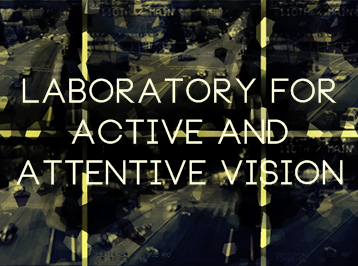
Location: Lassonde Building room 3001 York University 4700 Keele St. Toronto, Ontario, Canada, M3J 1P3
Faculty: John K. Tsotsos
The Laboratory for Active and Attentive Vision (LAAV) has its roots in the original Computer Vision Laboratory at the University of Toronto founded by John Tsotsos in 1980. In those years it was part of the Artificial Intelligence Group in the Department of Computer Science. There, Tsotsos also founded the Technical Report Series: Research in Biological and Computational Vision (1984 – 1996). In January 2000, Tsotsos moved to York University to take up the Directorship of the Centre for Vision Research and a portion of that lab followed him. The history of the current lab thus goes back to 1980 and includes a significant number of students, post-docs and publications from the pre-York era.
At York, the Laboratory for Active and Attentive Vision is situated within the Department of Computer Science & Engineering. It is also one of over 35 labs in the much larger Centre for Vision Research. The lab has grown steadily over its history now bursting at the seams in rooms 3001 A, B and 3054 in the Lassonde building. With a rich set of international collaborators, and a well-equipped infrastructure the lab is an exciting research focus for interdisciplinary research on human and primate visual attention and active vision for robotics. Research is ongoing within four themes: Refinements and Expansions of the Selective Tuning Model (ST) for Visual Attention; Human Experimental Investigations on the relationship of ST To Biological Vision and Visually-Guided Robotics with application to Aids for the Physically Disabled.
Faculty: Marin Litoiu
Our Lab researches methods and products that make large software systems more versatile, resilient, energy-efficient, self-healing or self-optimizing. Research topics include software engineering for adaptive and autonomic software, software performance modeling and evaluation, performance optimization, software as a service, AIOps and MLOps for cloud computing and Internet of Things.
Our Lab researches methods and products that make large software systems more versatile, resilient, energy-efficient, self-healing or self-optimizing. Research topics include software engineering for adaptive and autonomic software, software performance modeling and evaluation, performance optimization, software as a service, AIOps and MLOps for cloud computing and Internet of Things.
Website: https://wiki.eecs.yorku.ca/lab/egzlab/
The BioSA research program is focused on the development of Biologically Inspired Sensor and Actuator (BioSA) technologies. The basic understanding of in-vivo sensing/actuating mechanisms inspires novel ideas to addressing challenges in various life science applications including point-of-care disease diagnostics (PoCD), environmental monitoring, automation of biological and chemical laboratories, pharmacological and food industries and etc. In this direction, the BioSA lab examines novel BioSA methods by mimicking the biological micro-environments using Integrated Microelectronic Circuit, Micro-electromechanical System and Microfluidic techniques. This multidisciplinary research approach allows the lab to offer high throughput, high precision, rapid BioSA platforms for clinical applications, bioengineering research and biotech industries.
The BioSA research program is focused on the development of Biologically Inspired Sensor and Actuator (BioSA) technologies. The basic understanding of in-vivo sensing/actuating mechanisms inspires novel ideas to addressing challenges in various life science applications including point-of-care disease diagnostics (PoCD), environmental monitoring, automation of biological and chemical laboratories, pharmacological and food industries and etc. In this direction, the BioSA lab examines novel BioSA methods by mimicking the biological micro-environments using Integrated Microelectronic Circuit, Micro-electromechanical System and Microfluidic techniques. This multidisciplinary research approach allows the lab to offer high throughput, high precision, rapid BioSA platforms for clinical applications, bioengineering research and biotech industries.
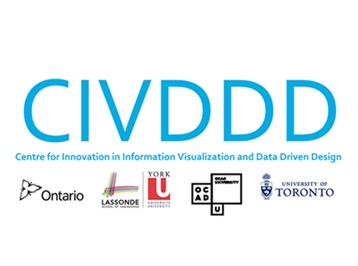
Website: https://www.civ-ddd.ca/
Faculty: Aijun An, Melanie A. Baljko, Petros Faloutsos
The Centre for Innovation in Information Visualization and Data-Driven Design (CIVDDD) is the preeminent research hub for innovation and training in information and scientific visualization in Ontario, unrivalled in Canada for its equally strong footing in the sciences and the arts.
Driven by the increasing complexity of data sets, the need for visualization of both data and information is growing exponentially in scientific, social science, and humanities research, finance, and virtually all industries.
The CIVDDD project aims to respond to these needs for visualization by combining existing regional research strengths to create and develop new methods and tools for data-driven design by establishing a centre of excellence in information visualization, which will result in new products and services as well as highly-trained, data-ready personnel for a variety of data-dependent industries.
The following industry sectors are of central interest: Medicine and Bioinformatics, Science and Engineering, Management and Finance, Culture and Entertainment, Heritage and Education.
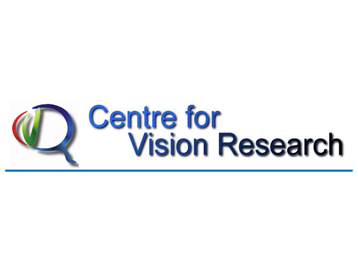
Location: Centre for Vision Research – York University Room 0009, Lassonde Building, 4700 Keele Street Toronto, Ontario, M3J 1P3
Phone: 416 736-5659
Email: manini@cvr.yorku.ca
Faculty: Robert Allison, James Elder, Richard Hornsey, Michael Jenkin, Minas Spetsakis, John K. Tsotsos, Richard P. Wildes
The Centre for Vision Research (CVR) at York University is an international leader in human and machine vision research. Uniting researchers from psychology, computer science & engineering, biology and kinesiology & health science, work at the centre is highly interdisciplinary and collaborative, rooted in a fundamental research programme that merges techniques in human psychophysics, visual neuroscience and computational theory. Leading-edge facilities include a 3T fMRI scanner, a six-sided immersive virtual reality room, and a wide array of visuo-robotic platforms.
The CVR is home to a rich history of scientific discovery and technological innovation with real-world consequences. Our vision health research tackles the problems of strokes, migraines, brain disorders, autism and visual deficits in Canada’s aging population. Vision technology application areas include medical and assistive devices, visual security, search-and-rescue, 3D film, and augmented reality systems used in collaboration with NASA and the aerospace industry.
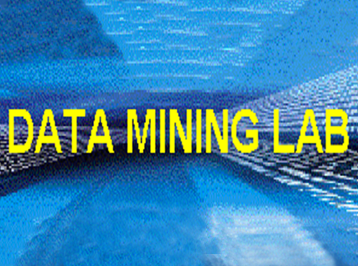
Website: https://dminer.eecs.yorku.ca/index.html
Location: Lassonde Building Room 2057, York University, Keele St. Toronto, Ontario, Canada, M3J 1P3
Faculty: Aijun An
The Data Mining Lab conducts advanced research in data mining, knowledge discovery, computational linguistics, natural language processing, machine translation and bioinformatics. We support the graduate program in computer science by training students in data mining and related areas. Our goal is to equip students with practical experience by conducting projects with industry and academic partners. We also provide an interactive environment for students and postdocs to exchange ideas.

Location: Lassonde Building room 2053 York University 4700 Keele St. Toronto, Ontario, Canada, M3J 1P3
Faculty: Parke Godfrey, Jarek Gryz

Location: Lassonde Building room 3003, York University 4700 Keele St. Toronto, Ontario, Canada, M3J 1P3
Faculty: Eric Ruppert, Franck VanBreugel
The DisCoVeri group is part of York University in Toronto. Its members carry out research in the areas of distributed computing, concurrency and verification. Currently, the group consists of two professors and three students.

Website: https://www.elderlab.yorku.ca/
Location: Centre for Vision Research: Lassonde building room 0002 York University 4700 Keele Street Toronto, Ontario
Faculty: James Elder
Our laboratory conducts research in human and computer vision. This research involves psychophysical experiments on human subjects, mathematical analysis of problem constraints, and development of computational models and algorithms.
This laboratory is part of the York University Centre for Vision Research. Students in the laboratory are typically registered in Computer Science, Psychology or Mathematics Departments.
Our goals are to develop better theories of visual processing, as well as practical knowledge and algorithms that may be applied to problems in visual surveillance, remote learning and geomatics applications. We collaborate with a number of companies and government organizations on this applied research.
The laboratory is funded by grants and contracts from:
The Natural Sciences and Engineering Research Council (NSERC)
The Centre for Information Visualization and Data-Driven Design (CIVDDD)
The Ministry of Transportation Ontario (MTO)
Ontario Centres of Excellence (OSE)
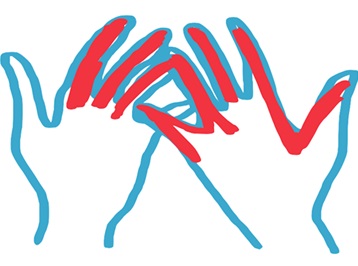
Website: https://emil.lab.yorku.ca/
Location: Lassonde Building York University 4700 Keele Street. Toronto
EMIL Wiki: https://wiki.eecs.yorku.ca/lab/emil/start
Faculty: Sebastian Magierowski
The EMIL Lab is concerned with semiconductor devices, integrated circuits, and VLSI for communications and embedded systems.
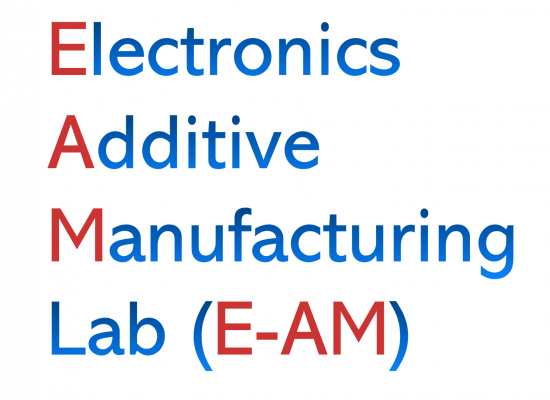
Website: https://www.eecs.yorku.ca/~grau/
Location: BRG 324
Faculty: Gerd Grau
The Electronics Additive Manufacturing (E-AM) Lab at York University focuses on additive manufacturing (AM) as a means to fabricate electronics with completely new geometries and properties including flexible substrates and 3D surfaces. We define AM liberally as any manufacturing method that does not require subtractive steps such as etching, cutting or milling. This definition includes printing of thin films, 3D printing and even weaving. What these techniques have in common is that we use liquids inks to fabricate functional materials with electrical, mechanical or biomedical functionality. We use these novel materials and AM techniques to fabricate devices such as transistors, sensors, light-emitting devices or batteries.
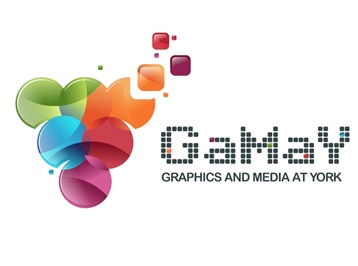
Website: https://gamay-hub.github.io/
Location: Lassonde Research Centre (LRC), York University
Faculty: – Melanie Baljko, Petros Faloutsos, Matt Kyan, Sana Maqsood, Kiemute Oyibo, James Smith, Vassilios Tzerpos
The Graphics and Media at York (GaMaY) Hub is the site of the conjoined research labs and research activities that span Human-Computer Interaction, Computer Graphics, Visual Computing and Immersive Technologies. Please visit our hub website to see more about the co-located labs, which includes the Audio Processing Techniques Lab at York (APTLY), Computer Graphics Lab @ GaMaY, Engineering Education Sandbox, Immersive Computing Lab @ GaMaY, Practices in Enabling Technologies Lab (PiET),Practical Privacy Lab @ GaMaY, Persuasive Design Lab @ GaMaY

Website: https://pisana.lab.yorku.ca/
Location: Petrie Building Room 027 York University Toronto, Ontario Canada M3J 1P3
Faculty: Simone Pisana
The HEATED (HEAT transport in Electronic Devices) lab at York studies heat and electron transport in nanoscale devices, interfaces, materials and composites with the aim of improving the energy efficiency of electronic devices. The lab recently worked on a method to measure the Curie temperature distribution in magnetic media, particularly for FePt nanogranular media, where this dispersion can severely hinder the achievable data storage density in heat-assisted magnetic recording.

Website: https://lcrain.eecs.yorku.ca/
Location: Petrie Building room 021
Faculty: Amirali Amirsoleimani
In York University Lab for Computing Research and Innovation (LCRAIN), we are looking into novel computing paradigms by using emerging technologies to design novel computing architectures and integrated circuits (ICs). We are aiming to develop hardware/software co-design solutions for artificial intelligence, security, biomedical, and neuromorphic applications. We will explore several hardware-software co-design solutions for ultra-efficient computing at the edge. These innovative strategies are at different levels, from algorithms, circuits, and systems to benefit from the device engineering level. I will develop a new class of ultra-efficient electronic hardware along with some novel software solutions that will extensively capitalize on unique device physics and innovative implementation for reaching efficiency close to biology.
Website: https://wiki.eecs.yorku.ca/lab/MLL/
Faculty: Hui Jiang
The Laboratory for Neural Computing for Machine Learning (NCML) supports research in areas of neural computing models and algorithms for machine learning, with applications to speech recognition and understanding, natural language processing, image/video recognition.
Research Goals:
⚫︎ Explore new neural computing models for machine learning: we explore novel neural computing models and algorithms, which are powerful enough to tackle complex real-world artificial intelligent tasks and meanwhile efficient enough to make good use of big-data.
⚫︎ Investigate neural representations of knowledge for artificial cognition: we investigate a new research area to represent world knowledge (including common sense, common knowledge and domain-specific information) as distributed representations in continuous semantic spaces to achieve advanced cognition, such as teaching machines to think like humans.
⚫︎ Advance machine intelligence in speech recognition and understanding, natural language processing and computer vision: we focus on three main application areas: a) human-machine dialogue systems via speech or text, such as personal assistant agent in smart phones. b) deep natural language processing and understanding, such as automatic machine question & answer (Q&A) systems in general domains or special fields (medical, health, legal, etc). c) Image and video scene analysis, such as autonomous robot navigation and controlling.
Faculty: Hui Jiang
The Laboratory for Neural Computing for Machine Learning (NCML) supports research in areas of neural computing models and algorithms for machine learning, with applications to speech recognition and understanding, natural language processing, image/video recognition.
Research Goals:
⚫︎ Explore new neural computing models for machine learning: we explore novel neural computing models and algorithms, which are powerful enough to tackle complex real-world artificial intelligent tasks and meanwhile efficient enough to make good use of big-data.
⚫︎ Investigate neural representations of knowledge for artificial cognition: we investigate a new research area to represent world knowledge (including common sense, common knowledge and domain-specific information) as distributed representations in continuous semantic spaces to achieve advanced cognition, such as teaching machines to think like humans.
⚫︎ Advance machine intelligence in speech recognition and understanding, natural language processing and computer vision: we focus on three main application areas: a) human-machine dialogue systems via speech or text, such as personal assistant agent in smart phones. b) deep natural language processing and understanding, such as automatic machine question & answer (Q&A) systems in general domains or special fields (medical, health, legal, etc). c) Image and video scene analysis, such as autonomous robot navigation and controlling.
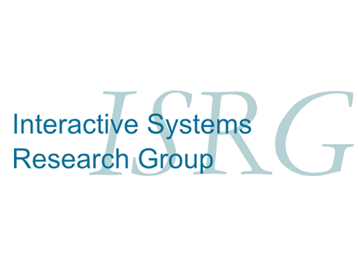
Location: Lassonde Building room 2001 York University 4700 Keele St. Toronto, Ontario, Canada, M3J 1P3
Faculty: Scott MacKenzie
The Interactive Systems Research Group is located in the Interactive Systems Research Laboratory (ISRLab) in the Lassonde Building LAS20011, the former Computer Science & Engineering Building. The inhabitants of the lab can be reached via (416)736-2100 ext. 20161. Information about research activities within the ISRG is available via the WWW pages of its members, see the links above. Hardware available in the lab includes:
⚫︎ A new kind of 4/5-sided CAVE system
⚫︎ Leap Motion, 3Gear, and other input hardware
⚫︎ Oculus Rift
⚫︎ A haptics workstation with stereo display
⚫︎ Various optical tracking systems
⚫︎ A high-end touch screen.
⚫︎ HDR Systems – high-dynamic range display and projection systems.
⚫︎ Hedgehog – a new, very accurate 6DOF tracking system.
⚫︎ Many multi-display computers.
⚫︎ Various stereo displays, including a large screen.
⚫︎ Graphical tablets, Tablet PC’s, PDA’s, etc.
⚫︎ Various text input devices (including cell-phones).
⚫︎ Video and audio recording equipment.
⚫︎ MULTI – a novel setup for collaborative design, consisting of 3 interactive walls and an large interactive table together with multiple laser styli.
Furthermore, and mainly depending on the research topic, students may have access to various other labs. E.g. faculty members can arrange for access to several other Virtual Reality labs, such as a 6-sided CAVE or motion platform.
The work in the lab has been sponsored by many different companies, including AMD and Autodesk.

Website: https://electronics.eecs.yorku.ca/
Location: Bergeron Building Room 324
Faculty: Hossein Kassiri
Our Lab research focus lie primarily in the field of design and development of wireless mixed-mode (analog and digital) microelectronic integrated circuits that interact with physiological systems.
The interaction includes:
Website: https://pacs.eecs.yorku.ca/
Location: Lassonde Building, room 2017 (LAS2017)
Faculty: Hamzeh Khazaei
In the Performant and Available Computing Systems (PACS) Lab, we analyze, model, and promote the non-functional properties, performance and availability, in particular, of computing software systems. The essential innovation is to make these systems smart enough to guarantee their intended operation with the expected quality of service. To this end, rigorous analytical modelings using queuing theory, stochastic processes, machine learning, optimization techniques, control theory, and Petri net may be leveraged. Large-scale validation of analytical models will be performed on cloud computing and edge environments.
Location: Lassonde Building, room 2017 (LAS2017)
Faculty: Hamzeh Khazaei
In the Performant and Available Computing Systems (PACS) Lab, we analyze, model, and promote the non-functional properties, performance and availability, in particular, of computing software systems. The essential innovation is to make these systems smart enough to guarantee their intended operation with the expected quality of service. To this end, rigorous analytical modelings using queuing theory, stochastic processes, machine learning, optimization techniques, control theory, and Petri net may be leveraged. Large-scale validation of analytical models will be performed on cloud computing and edge environments.
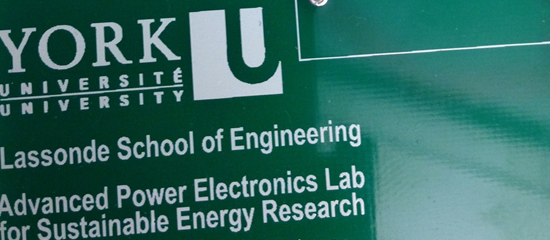
Website: https://pelser.lab.yorku.ca/
Faculty: John Lam
York University’s Advanced Power Electronics Laboratory for Sustainable Energy Research (PELSER) focuses on the development of leading-edge power electronics technologies for renewable energy systems and sustainable energy applications.
Research at PELSER focuses on the utilization of power electronics to create highly efficient and reliable power converter systems for renewable energy applications.
While the generation of energy is important, efficient use of energy is also vital to minimize energy costs and unnecessary stress on our utility grid. Innovative and intelligent power electronic interface design is the key for enabling electronic devices to consume less energy, be cost effective and more reliable.
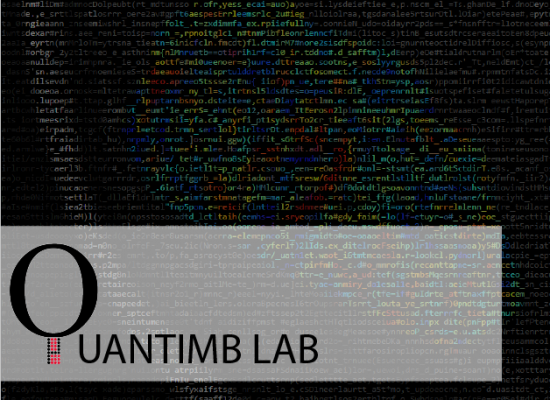
Website: https://quantimb.lab.yorku.ca/
Location: FRQ 105, Farquharson Life Sciences Building
Faculty: Ali Sadeghi-Naini
The QUANTIMB Lab at York develops quantitative imaging and smart biomarker technologies for tissue characterization in various diagnostic, interventional, and prognostic applications. The technologies being developed in the lab analyze signals acquired from different imaging modalities using intelligent signal processing, computational modeling, and machine learning to derive smart imaging biomarkers for specific biological or clinical applications. The lab develops ad hoc AI algorithms and integrates them with these biomarkers to diagnose an abnormality, tailor a standard therapy for individual patients, or predict the outcome of a prescribed treatment.
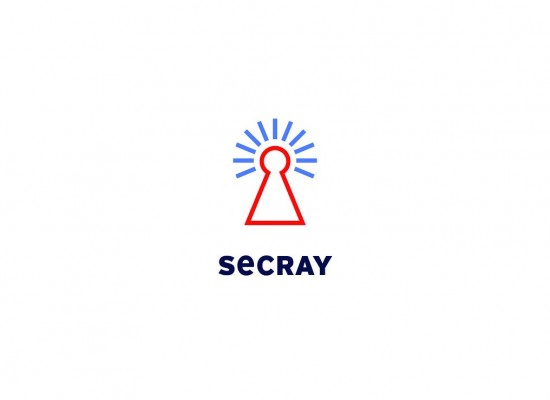
Website: https://www.cse.yorku.ca/SecRAY/
Faculty: Vassilios Tzerpos, Natalija Vlajic
The increasing volume and sophistication of cyber security threats-including targeting phishing scams, data theft, and other online vulnerabilities-demand that we remain vigilant about securing our systems and information. The Security Research at York (SecRAY) Group investigates a variety of research problems connected with computer security.
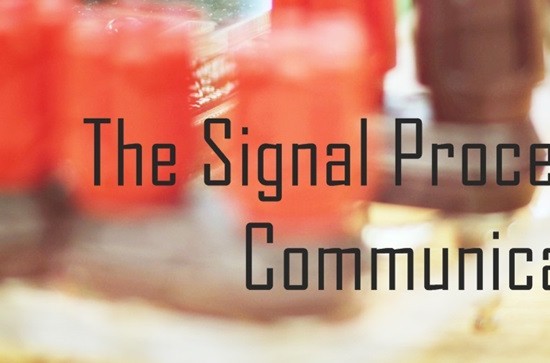
Location: Lassonde Building room 2052 York University 4700 Keele St.. Canada, M3J 1P3
Faculty: Mokhtar Aboelaze, Suprakash Datta, Andrew Eckford, Hui Jiang, Natalija Vlajic
The Signal Processing and Communications (SPC) Lab supports a variety of research projects. Its infrastructure includes dual-boot workstations, Qualnet network simulation software, and other software for audio/speech/image processing, bioinformatics, sensor networks, and wireless/wireline communications.
Faculty: Zhen Ming (Jack) Jiang
The SCALE Lab is concerned with the following research questions:
• Can we verify if the system under test can handle millions of concurrent requests in the field?
• How can we leverage big-data infrastructures (e.g., Hadoop) to analyze gigabytes or terabytes of system data (logs and counters)?
• What can we learn from the past software development history (e.g., source code and bug repositories) to help software developers and managers?
The SCALE Lab is concerned with the following research questions:
• Can we verify if the system under test can handle millions of concurrent requests in the field?
• How can we leverage big-data infrastructures (e.g., Hadoop) to analyze gigabytes or terabytes of system data (logs and counters)?
• What can we learn from the past software development history (e.g., source code and bug repositories) to help software developers and managers?
Website: https://se.news.yorku.ca/
Location: Lassonde Building room 2056 York University 4700 Keele St. Toronto, M3J 1P3
Faculty: Marin Litoiu, Zhen Ming (Jack) Jiang
The Software Engineering Research group of York University welcomes students at a Master’s or Doctoral level interested in pursuing research in the area. Currently, two departments offer relevant graduate programs. The Department of Computer Science and Engineering offers a Masters of Science (M.Sc.) and a Doctor of Philosophy (Ph.D.) degree in Computer Science. The School of Information Technology offers a Master of Arts (M.A.) in Information Systems and Technology (MAIST). From a Software Engineering standpoint, the two programs have distinct character and aim at developing different and complementary skill-sets for conducting research in the field.
Prospective students are encouraged to contact the programs or SE @ York faculty members for more details as well as application procedures and deadlines.
Location: Lassonde Building room 2056 York University 4700 Keele St. Toronto, M3J 1P3
Faculty: Marin Litoiu, Zhen Ming (Jack) Jiang
The Software Engineering Research group of York University welcomes students at a Master’s or Doctoral level interested in pursuing research in the area. Currently, two departments offer relevant graduate programs. The Department of Computer Science and Engineering offers a Masters of Science (M.Sc.) and a Doctor of Philosophy (Ph.D.) degree in Computer Science. The School of Information Technology offers a Master of Arts (M.A.) in Information Systems and Technology (MAIST). From a Software Engineering standpoint, the two programs have distinct character and aim at developing different and complementary skill-sets for conducting research in the field.
Prospective students are encouraged to contact the programs or SE @ York faculty members for more details as well as application procedures and deadlines.
Website: https://se.news.yorku.ca/
Location: Lassonde Building room 2056 York University 4700 Keele St. Toronto, M3J 1P3
Faculty: Marin Litoiu, Zhen Ming (Jack) Jiang, Vassilios Tzerpos, Chen-Wei (Jackie) Wang
The Software Engineering Research group of York University welcomes students at a Master’s or Doctoral level interested in pursuing research in the area. Currently, two departments offer relevant graduate programs. The Department of Computer Science and Engineering offers a Masters of Science (M.Sc.) and a Doctor of Philosophy (Ph.D.) degree in Computer Science. The School of Information Technology offers a Master of Arts (M.A.) in Information Systems and Technology (MAIST). From a Software Engineering standpoint, the two programs have distinct character and aim at developing different and complementary skill-sets for conducting research in the field.
Prospective students are encouraged to contact the programs or SE @ York faculty members for more details as well as application procedures and deadlines.
Location: Lassonde Building room 2056 York University 4700 Keele St. Toronto, M3J 1P3
Faculty: Marin Litoiu, Zhen Ming (Jack) Jiang, Vassilios Tzerpos, Chen-Wei (Jackie) Wang
The Software Engineering Research group of York University welcomes students at a Master’s or Doctoral level interested in pursuing research in the area. Currently, two departments offer relevant graduate programs. The Department of Computer Science and Engineering offers a Masters of Science (M.Sc.) and a Doctor of Philosophy (Ph.D.) degree in Computer Science. The School of Information Technology offers a Master of Arts (M.A.) in Information Systems and Technology (MAIST). From a Software Engineering standpoint, the two programs have distinct character and aim at developing different and complementary skill-sets for conducting research in the field.
Prospective students are encouraged to contact the programs or SE @ York faculty members for more details as well as application procedures and deadlines.
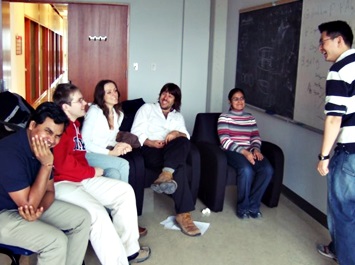
Website: https://wiki.eecs.yorku.ca/lab/tg/start
Location: Lassonde Building room York University 4700 Keele St. Toronto, M3J 1P3
Faculty: Suprakash Datta, Jeff Edmonds, Andranik Mirzaian, Eric Ruppert, Zbigniew Stachniak, George Tourlakis
The Theory of Computing Group is a part of the Department of Computer Science and Engineering at York University in Toronto, Canada. Theoretical computer science uses mathematical techniques to prove theorems about computation.
Research areas include:
This is an exciting area of research that forms the foundation for computer science and has many connections to other fields and important implications in the way computers are used. There are still many foundational questions that are unanswered, including some of the most important open questions in the mathematical sciences.
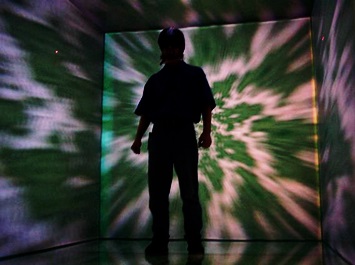
Website: https://percept.eecs.yorku.ca/index.html
Location: Lassonde Building room 3023/3027 York University 4700 Keele St. Toronto, M3J 1P3
Faculty: Robert Allison
The virtual reality and perception lab performs basic and applied research on stereoscopic depth perception and virtual reality. We study how the brain, or a machine, can reconstruct a three-dimensional percept of the world around us from the two-dimensional images on the retinas and how we use this information to move about and interact with our environment. We are particularly interested in the role of vertical disparities in stereopsis, the integration and relation between depth cues and the role of eye movements in depth perception. We have excellent facilities for generating and presenting three-dimensional displays and recording the movements of the head, eyes and body in response to these displays.
We have active research projects that apply our basic research to the study of perception in virtual and augmented reality. We are pursuing a number of issues in simulation, immersive virtual-reality (VR) and augmented-reality (AR) systems including effects of distortions in the stereoscopic display, cue conflict in synthetic displays, the effects of time delay and the development of novel predictive head trackers for augmented and virtual reality. We also use virtual-reality technology as a tool to study depth perception and the perception of motion through a three-dimensional environment. In virtual worlds we are not constrained by the laws of physics and the natural world. With carefully designed experiments, we can manipulate the sensory inputs to the user more freely to investigate how sensory cues are used and integrated.
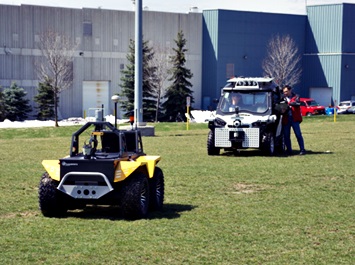
Location: Sherman Building room 1003/1026 York University 4700 Keele St. Toronto, M3J 1P3
Faculty: Michael Jenkin
This lab supports research in Computer Vision, Computer Graphics and Robotics within the Department of Computer Science and Engineering. The VGR Laboratory is also the home of the Canadian Centre for Field Robotics.
The VGR Lab can be found within the Sherman Health Science Research Building at York University.

Website: https://vision.eecs.yorku.ca/main/
Location: Lassonde Building room 3002 York University 4700 Keele St. Toronto, M3J 1P3
Faculty: Richard Wildes
The Vision Lab is part of the Department of Electrical Engineering & Computer Science at York University and also is affiliated with the Centre for Vision Research. Research in our lab encompasses both theoretical and applied aspects of computer vision, with particular concerns for motion, stereo and spatiotemporal analyses.
Website: https://vista.info.yorku.ca/
Location: 4700 Keele Street, Toronto, ON, M3J 1P3
Faculty: Richard Wildes, James Elder
Phone: 416.736.2100 x44197
Email: infovista@yorku.ca
The central scientific question that drives VISTA is ‘How can neural and/or machine systems be integrated to provide adaptive visual behaviour in real-world conditions’. Answering this question will provide fundamental advances to vision science and exciting, widespread applications for visual health and technologies. Our overarching aim is to advance visual science through research that spans computational and biological perspectives and results in real-world applications.
Location: 4700 Keele Street, Toronto, ON, M3J 1P3
Faculty: Richard Wildes, James Elder
Phone: 416.736.2100 x44197
Email: infovista@yorku.ca
The central scientific question that drives VISTA is ‘How can neural and/or machine systems be integrated to provide adaptive visual behaviour in real-world conditions’. Answering this question will provide fundamental advances to vision science and exciting, widespread applications for visual health and technologies. Our overarching aim is to advance visual science through research that spans computational and biological perspectives and results in real-world applications.